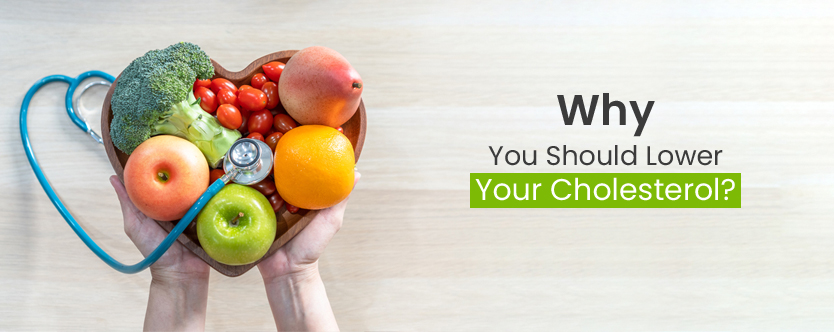CHOLESTEROL
One disease many cures, many diseases one cure.
If the body organs had a popularity chart, without doubt the human heart would hit the top. And week after week, year after year, it would maintain its numero uno position! The human heart is a glamorous organ. After all, it is forever in the news. This awesome pumping station of the body has the power to bring your body functions to a complete halt.
So what lies at the heart of all heart troubles? Although, a number of factors trigger heart disease, what gives it killer status is a destructive lifestyle. Man has made amazing progress over the years, but with the boons of modernization, come the banes as well. Today, pollution, stress, lack of exercise, unhealthy eating habits and smoking are leading the human body towards the brink of disaster. Pleasing the palate has become the rule of the day. If you could stop for a moment and think about the high cost of poorly nourished food eaten outside against the economic and healthy benefits of home cooked food, you would probably be encouraged to follow the concept of better nutrition. Most of us are undernourished not because of the unavailability of food but because of the consumption of the wrong types of food. Healthy, wholesome food has been replaced by refined, processed and high fat food stripped of practically all its nutrients. This kind of food intake plays havoc within and upsets the ability of our body to handle cholesterol correctly.
C for ‘Cholesterol.’
Time and again we have heard about cholesterol being the prime accused on the incidence of a heart attack. But, is cholesterol as terrifying as it sounds? In reality, cholesterol in blood is as important as salt in food. Cholesterol is a high-molecular-weight alcohol known as a ‘sterol’. Found in each and every cell of the body, without cholesterol the body cannot produce hormones, Vitamin D and the membranes of our cells. In fact, cholesterol is so vital that if you eat none your liver will produce it. The right amount is quintessential for optimum health. Cholesterol is harmless so long as it doesn’t get oxidized. It is the free radicals in the body, which oxidize the cholesterol and initiate the process of heart disease.
When a person follows a healthy lifestyle and dietary habits, his body is capable of handling excess cholesterol. These factors insulate his body from mishandling cholesterol. When the body is fed with high cholesterol food like eggs, red meat, high fat dairy products, etc., the liver compensates for the excess cholesterol by reducing its own production in order to keep the blood levels in check. But when a person leads an unhealthy lifestyle and has no control over his diet, his body fails to handle dietary cholesterol with expertise. And soon it gives the excess cholesterol a free permit to travel in to the bloodstream. Subsequently, it gets accumulated in the blood vessels and the coronary arteries leading to CAD or Coronary Artery Disease.
The intricacies of a heart attack
As a child, your arteries were clean, elastic and open. But as you grow you are exposed to junk, high fat, refined and processed food. Thus begins the process of artery clogging or arteriosclerosis, the first step to a heart attack. Excessive consumption of fatty food gives rise to plaques in the cells that line the artery wall. These plaques partially choke the blood flow in the arteries suffocating a part of the cardiac muscle. That’s how, a heart attack, one of the most frightening events in life, takes place. If the choked blood vessel leads to the brain, one suffers a stroke.
CAD or Coronary Artery Disease is likely to be the biggest killer in fifteen years’ time. Although it is possible to fend off this merciless killer, the masses are completely ignorant about this knowledge. CAD is a silent killer that takes root in early childhood and makes an appearance in adulthood. Precautionary measures should be adopted from childhood itself. There is overwhelming evidence that you can curb the progress of artery disease with the right diet. Although your genes may be at fault, what contributes significantly is your unhealthy lifestyle, stress, smoking, lack of exercise and most importantly your diet. You can actually save your arteries from getting clogged and if you are already a victim, you can avoid a future catastrophe.
The truth about LDL and HDL
A good cholesterol ratio is the right balance of the different cholesterols in the blood. The two main forms are HDL (Good cholesterol) or High Density Lipoprotein and LDL (Bad cholesterol) or Low Density Lipoprotein. LDL and HDL undertake the unique task of carrying vitamins and other substances through the blood. LDL cholesterol is high in fatty acids and low in protein and hence more prone to oxidation. It delivers cholesterol to the tissues. When you do not provide your body with sufficient antioxidants like selenium, Vitamin A, C and E, LDL get oxidized much faster. Hence it is referred to as the bad cholesterol. As far as LDL doesn’t get oxidized, it is not harmful.
On the other hand, HDL cholesterol is high in protein and carries lesser fatty acids. It picks up the excess cholesterol left by LDL and transports it back to the liver or to the tissues, which need it. Hence it is called the good cholesterol. So if you have an undesirable ratio of very high LDL and very low HDL, beware. Most of the people suffering from heart disease show a high heart risk ratio. This ratio not only increases the coronary risk but also leads to insulin resistance, type II diabetes and even depresses the immune system.
I have often seen vegetarians getting shocked on noticing their high lipid profile. However, whether vegetarian or non-vegetarian, no one wears the shield against heart disease. Scrutinize your diet and soon enough you will be able to nab the culprit. Refined oil, cheese, products made from white flour, sweets, chocolates, ice creams, whole milk, fried and processed foods are all LDL boosting agents. Besides unhealthy eating habits, lack of exercise, stress and genetics are also responsible for too much
LDL. The degree to which your arteries can get damaged depends on-
1.The amount of free radicals in your body.
2.The amount of antioxidants (found in fresh fruits, vegetables and whole grains.) consumed, as they suppress free radical activity.
3.The type of oil used.
The amount of soluble fibre in your diet.
Stress: the Cholesterol booster
Heard the phrase, ‘My heart leapt with joy when I saw a rainbow?’ Well, your heart truly is a delicate organ. It leaps with joy when you are happy and it feels heavy as a stone when you are low.
Stress, anger and negative emotions make an impact on your heart. A Harvard medical school research states that the average risk of a heart attack increased, two hours after the outset of anger, by two to three times. In addition to anger and distress, psychologists also emphasise on feelings of depression and helplessness. To put it simply, we are physiologically different when we are happy and sad. Even when the cholesterol level is not high enough to obstruct the arteries, negative emotions make an impact. They cause the release of a biologically toxic chemical known as ‘cortisol.’ It causes a spasm in the arteries and cuts the blood flow to the heart muscle. The result is angina pain and at times it can be even more fatal. Every time you experience a negative emotion, more cortisol is produced. This destroys the HDL cholesterol. Negative and suppressed emotions are major contributors of heart disease. They promote blood clots, cause thickening of arterial walls and also lead to hypertension. Especially in the metros, heart disease after a certain age has become as common as common cold. In fact for some people, stress can be fatal. But thankfully, there are some very simple ways to keep your emotions from weighing your heart down.
- Meditate: This Vedic wonder has now become a universal panacea. Scientists have observed a reduction in BP and heart rate after prescribing meditation. They found increased levels of the calming neurotransmitter and significant changes in brain waves on sophisticated EEG machines. They concluded that all these changes cut the risk of heart disease.
- Deep breathe: Deep and deliberate breathing exercises require no special place or clothes. Practice it every day, especially if you are stressed. While doing this keep your mind blank. Think of a beautiful scene like a sunrise or a waterfall and breathe in oodles of good health.
- Smile: As the proverb goes, “Smile, it costs nothing but gives much,’ smiling sure is an effective way to control stress. Your body releases a calming factor called serotonin, which is responsible for satiety and positive attitude. So smile even you don’t feel like, it helps. Surprising as it may sound, your body responds favourably by triggering positive emotions. So, the next time you have a row with your spouse or friend, or you lose your temper, just smile. It may not make things better but it will keep your heart happy.
Homocysteine: The new enemy on the block
If you thought that elevated cholesterol levels was the only risk factor in heart disease, you have got it wrong. New research has helped us understand why everyone getting a heart attack did not necessarily have high cholesterol. May I introduce to you the latest culprit in the CHD scene- ‘Homocysteine’, the missing piece of the puzzle!
With the help of this knowledge, we can fine-tune our protection against CHD. High blood levels of this element can increase your risk of a heart attack.
What is Homocysteine?
It is an amino acid and is harmless if properly metabolised by the body. If it isn’t, then excessive amounts build up in the blood increasing the risk of cardiovascular disease, including heart attacks and strokes. Men with the highest Homocysteine levels have three times the risk of precipitating a heart attack, even if all the other factors like lipid profile, BP and smoking are under control. How elevated Homocysteine levels contribute to cardiovascular disease is still a mystery, but researchers speculate that it increases the possibility of clot formation and promotes plaque formation thus damaging the arteries. What causes elevated homocysteine levels? Certainly there is a genetic factor that determines how efficiently your body metabolises amino acids, but the principal problem appears to be associated with the diet. Insufficient concentration of the three B-Vitamins, i.e. folic acid, Vitamin B6 and B12 cause homocysteine levels to build up in the blood. In a normal person, the body requires adequate supplies of these three vitamins to break down amino acids and utilize them properly. As we age, our body absorbs less and less of the B-vitamins and the homocysteine levels tend to rise. Therefore, the risk of heart attack also increases. Sufficient amounts of folic acid, B6 and B12 reduce the blood levels of homocysteine. The higher the concentration of folic acid in the diet, the lower the homocysteine levels. Other factors, which increase homocysteine levels, apart from the B-vitamin insufficiency, are smoking, lack of exercise and high cholesterol. Men and women above sixty years of age also suffer from higher levels of homocysteine.
Vitamin B to douse homocysteine levels.
Taking those three vitamins is the first step. You need to take at least 200 mcg of folic acid daily to reduce homocysteine levels. To be absolutely sure that you are getting sufficient B-vitamins, take 2mg of B6 and 6mg of B12 as well. You will find these amounts in a typical B-vitamin Supplement. For most people, consuming at least 5-8 servings of fruits and vegetables daily should be sufficient to normalize homocysteine concentration. One serving is equal to half a cup of cooked vegetable or one cup of raw vegetable. One fruit serving is equal to one small apple, banana or orange or one cup of papaya or watermelon cubes or any large fruit. Whole pulses are also a rich source of folic acid. Fruits, vegetables and whole pulses also tend to be high in other nutrients and soluble fibre, and provide additional benefit over supplements. But if your serum folate levels are very low and homocysteine levels very high it is wise to take both- fruits, vegetables and the B-vitamin supplements to completely eliminate the risk factor of an elevated homocysteine level.
Blood clots: the heart’s nightmare.
Most diets designed to prevent cardiovascular disease have one primary goal, which is ‘lowering your cholesterol levels’. But this is just one amongst a number of ways to protect your heart, not the only one. Besides, it is a slow procedure. If all adults were to follow a cholesterol lowering diet only, the number of deaths from heart disease would be much higher. One of the single greatest determinants of whether you will suffer a heart attack or a stroke is the way your blood clots. The viscosity of the blood, its stickiness and its tendency to form clots are important factors that can be averted to save you from a cardiovascular tragedy. The therapeutic effect of foods on heart disease has more to do with blood clotting factors than with blood cholesterol. It usually takes longer to cut your risk of heart disease by reducing cholesterol than it takes by preventing blood clot formation. Ideally speaking, both cholesterol levels as well as blood clots should be reduced.
Curbing blood clots with the right food.
Here are a few clot-busting foods. They thin the blood by suppressing platelet clumping, depress fibrinogen levels (high blood levels of fibrinogen is a predictor of heart disease) and improve clot-dissolving activity. The anti-clotting effect happens almost immediately i.e. within 3-4 hours of eating them. Therefore when such foods are eaten regularly in small quantities they can have a powerful pharmacological effect on your blood clots and save you from a tragedy.
You can reduce your chances of heart attack by preventing clots by consuming foods such as garlic, ginger, raw onions, green chillies, capsicum, green tea, raw vegetables, flaxseed oil, olive oil, dry red wine, fatty fish like salmon, mackerel, sardines, asprin and vitamin E supplements. Some foods such as garlic, onions and raw vegetables do both the jobs i.e. reduce blood clots as well as lower cholesterol so that you can get double benefit. In contrast, certain foods encourage clot formation-namely high fat dairy products like milk, cheese, animal protein as in mutton, pork, steak, fried foods, maida based fried snacks like samosas, kachoris, pizzas, burgers, etc.
Tips for thinning the blood
- Crush garlic and cook it lightly with tomatoes in a teaspoon of olive or groundnut oil. Spread the paste on a slice of whole wheat bread or a whole-wheat khakra (oil free) and have it for breakfast along with a glass of vegetable juice made from ½ raw onion, 2 carrots and 2 tomatoes. (The anticoagulant compound called ‘ajoene’, present in garlic is released in the presence of heat and acidic food like tomatoes.)
- Regular intake of red wine (taken in moderation) or black grape juice seems to promote anticoagulant activity discouraging heart disease.
- Eat half an onion as part of the salad with each meal. This would help to keep the blood thin.
- The ‘garam masala’ used in Indian cooking, discourages blood platelet clumping. Cloves and cumin seed powder used in it promote anti-clotting activity.
How fibre curbs cholesterol.
One of the easiest ways to fight cholesterol is to increase the intake of soluble fibre. This can be found in abundance in plant foods, especially fresh, raw and unpeeled fruits and vegetables. Soggy, overcooked vegetables lose a lot of their fibre. Even juices hardly contain any fibre.
Fibre-rich foods: Unrefined grains like dahlia (broken wheat), whole-wheat flour, wheat puffs, brown rice, jowar and bajra. Whole dals like channa, rajma, chowli, beans and black dal. Wheat bran happens to be one of the highest known fibre foods. Its fibre content is about 50%.
A diet rich in fibre lowers cholesterol, blood pressure, keeps heart attacks and strokes at bay. It also has a powerful impact on the body’s metabolism of sugar and fats. A regular intake of 40-45 gm fibre a day is recommended to prevent heart disease. Here’s a table that guides you what’s in and what’s out.







